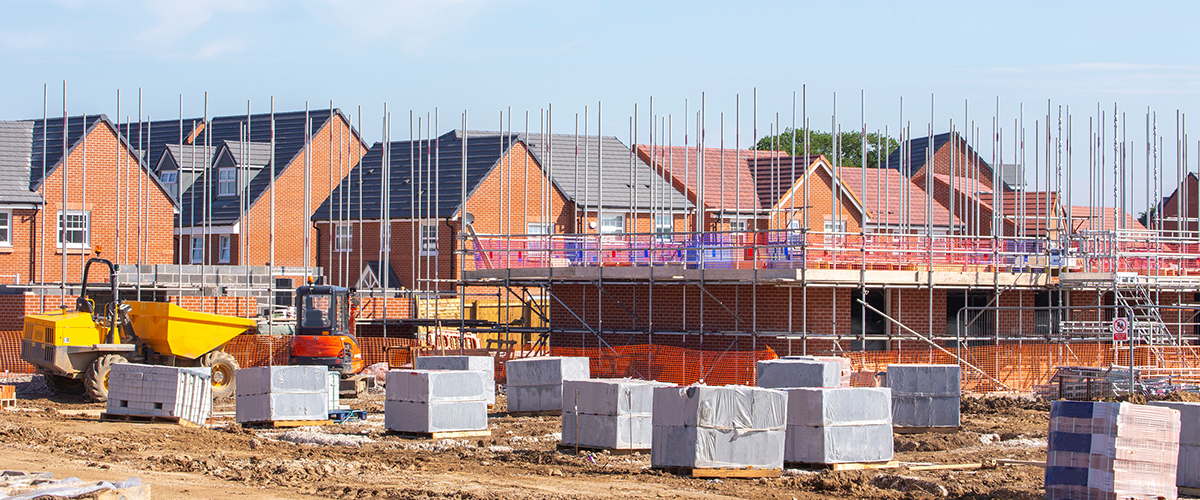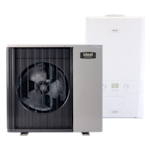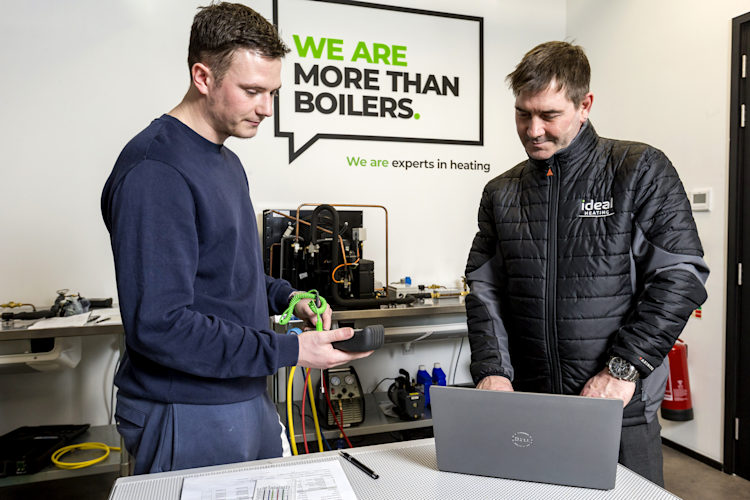
Introducing Part L: What the new building regulations mean for you
The building regulations that cover the energy performance of new and existing buildings have been revamped for England and Wales.
The changes to Part L of the regulations are a stepping-stone on the way to the Future Homes Standard which lands in 2025.
The Future Homes Standard will mean all new homes must be futureproofed with low carbon solutions, such as heat pumps, with the aim of reducing carbon emissions by 75-80% compared to new homes under the current regulations.
The interim changes to Part L, which came into force in June 2022, aim to reduce carbon emissions by 31%.
And there are some new rules for existing homes too, including low temperature system designs for new or full replacement heating systems which will make it easier to retrofit heat pumps in the future.
Previously there were separate rules for new and existing dwellings, but they have now been combined into one document.
You can read the new regulations in full here, but first let’s look at some of the key points.
New Build homes
The new Part L requires a 31% reduction in carbon emissions compared with the previous regulations.
While in the past developers have been able to build to older versions of the regulations for some time after new regulations are published, this has now been tightened up, so homes with planning approval under the older regulations need to be started within 12 months of the regulations coming into force.
Here are some more highlights for heating solutions:
Updated Standard Assessment Procedure, which gives guidance on how a home's energy performance is calculated to version 10.2, including a reduction in carbon factors for electricity to reflect increasing renewable generation.
New wet central heating systems should be sized for a maximum flow temperature of 55°C
The appliance should be appropriately sized for the heat load of the property
Exposed pipework must be insulated
Thermostatic Radiator Valves on all radiators, except where the room thermostat is fitted
Mandatory airtightness test for all homes
Signed Buildings Regulations Compliance Report (BREL) and photographic evidence of build quality to be provided to the homeowner
Existing properties
The main rule changes for existing properties relate to the size of the heating system and commissioning:
New or full replacement (including all radiators and pipework) wet central heating systems should be sized for a maximum flow temperature of 55°C where possible. If the property does not allow for the system to be sized in this way then the lowest achievable flow temperature should be designed for.
The appliance should be appropriately sized for the heat load of the property
Guidance on commissioning and system preparation has been upgraded and is now part of the formal regulations, reference is made to standard BS7593 in the document.
Installers should familiarise themselves with the new regulations in full, which are an important step towards Net Zero and will help cut energy bills for homeowners, while also helping protect the planet from climate change.
The coming years will see a revolution in the way we heat our homes and installers need to stay compliant or risk being left behind.
We offer an industry leading range of training courses to help you stay on top of the changes to building regulations and offer an exceptional service to your customers.
It’s all part of our ongoing work to help contractors, specifiers and installers make the most of the Net Zero opportunity. Find out more about our training options and check out the common questions we’ve received on Part L below.
Some common questions we have received so far include:
When do I need to size the heating system for a 55°C flow temp?
When the system is in a New Build property or the full system is being replaced, this includes radiators and pipework.
Will Ideal be limiting its boiler’s flow temperature to 55°C?
No, the requirement in the regulation relates to the sizing of the system for new or full replacement systems. There are many situations where the boilers will still need to operate at a higher flow temperature. It is advised that the installer takes into account the heating system in the property when setting the flow temperature on the boiler during commissioning and where possible aim for a lower flow temperature.
What if it’s difficult to size the system for 55°C in the case of a full system replacement?
The regulations state that in cases where it is not feasible to install a space heating system that can operate at this temperature - for example where there is insufficient space for larger radiators, or the existing distribution system is provided with higher temperature heat from a low carbon district heat network - the space heating system should be designed to the lowest design temperature possible that will still meet the heating needs of the dwelling.
Do I need to use a filter?
Commissioning of the heating system is a notifiable requirement and the Part L document now specifically refers to commissioning of the system. The standard BS 7593 refers to the use of a filter. We recommend fitting a filter as best practice, particularly on a retrofit installation.
Do I need to conduct water testing?
There has always been guidance in the BS 7593 standard to ensure that water quality is of an appropriate standard, there are several ways this can be tested and there is no mandated specific process. Best practice states that it would be a good idea to use a water test kit which then enables the installer to demonstrate compliance.
Do I need to use a chemical cleanser and inhibitor?
The regulations state that before a new heating appliance is installed, all central heating and primary hot water circuits should be thoroughly cleaned and flushed out. A suitable chemical inhibitor should be added to the primary heating circuit to protect against scale and corrosion. In hard water areas, suitable measures should be taken to treat the feed water to water heaters and the hot water circuit of combination boilers to reduce limescale accumulation.
There are three methods of cleansing that are recognised in the water standards for cleansing a system: basic hot and cold flush, chemical cleanse or power flush – the installer should choose the most appropriate for the system.
If the system is running at a 55°C flow temp- a low temperature - should we consider a biocide?
Standard BS 7593 recommends considering the use of a biocide when the mean water temp is 50°C or below. A system with a 55°C flow rate and a delta T of 10°C will be operating at 50°C so a biocide should be used.


















